While Cartagena and Medellín tend to draw most international visitors to Colombia, this diverse South American country offers countless destinations that deserve equal attention, from quiet coffee-growing regions to laid-back Caribbean beach towns where local life moves at its own gentle rhythm.
From colonial architecture to mountain trails, and from bustling markets to peaceful valleys, here are 21 places across Colombia that showcase the country’s rich culture and natural beauty, perfect for both first-time visitors and returning travelers alike.
- Best tourist destination: Cartagena Old Town
- Underrated hidden gem: San Gil
- Best for families: Parque Arvi in Medellin
- Best for couples: Rosario Islands
- Best for solo travelers: Bogota’s La Candelaria
- Best for nature lovers: Cocora Valley
Cartagena, Colombia
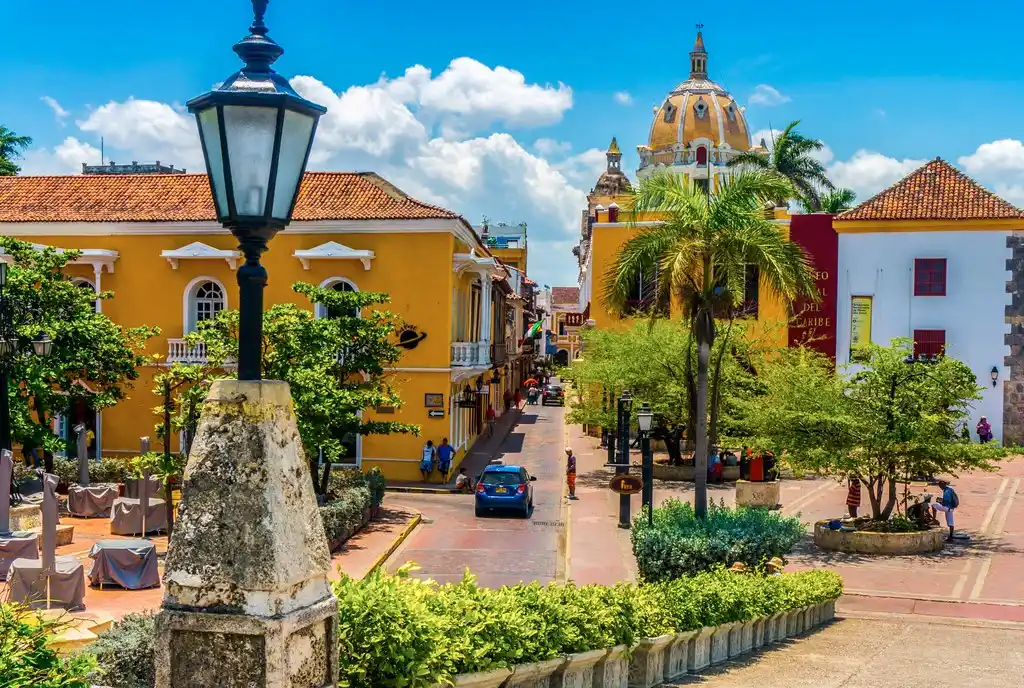
I always tell first-time visitors to Colombia to check out Cartagena. Located along the Caribbean coast, this historic city charms travelers with its well-preserved colonial architecture, colorful streets, and 16th-century stone walls. The Old Town, a UNESCO World Heritage site, tells stories of pirates and traders through its maze of cobblestone streets and grand plazas, while the modern Bocagrande area offers beachfront hotels and upscale restaurants.
Medellín, Colombia

Once known as one of the world’s most dangerous cities, Medellín has become one of Colombia’s biggest success stories. This city tucked into a valley of the Andes Mountains now draws visitors with its perfect spring-like weather year-round, innovative public transit system, and welcoming locals who are proud to show off their hometown. The city’s transformation is best seen in Comuna 13, where outdoor escalators climb the hillside past colorful street art, while the trendy El Poblado neighborhood beckons with its tree-lined streets filled with coffee shops and restaurants. Getting around is a breeze thanks to the metro system and cable cars that float above the city, offering some of the best views you’ll find of the surrounding mountains.
Tayrona National Park, Colombia
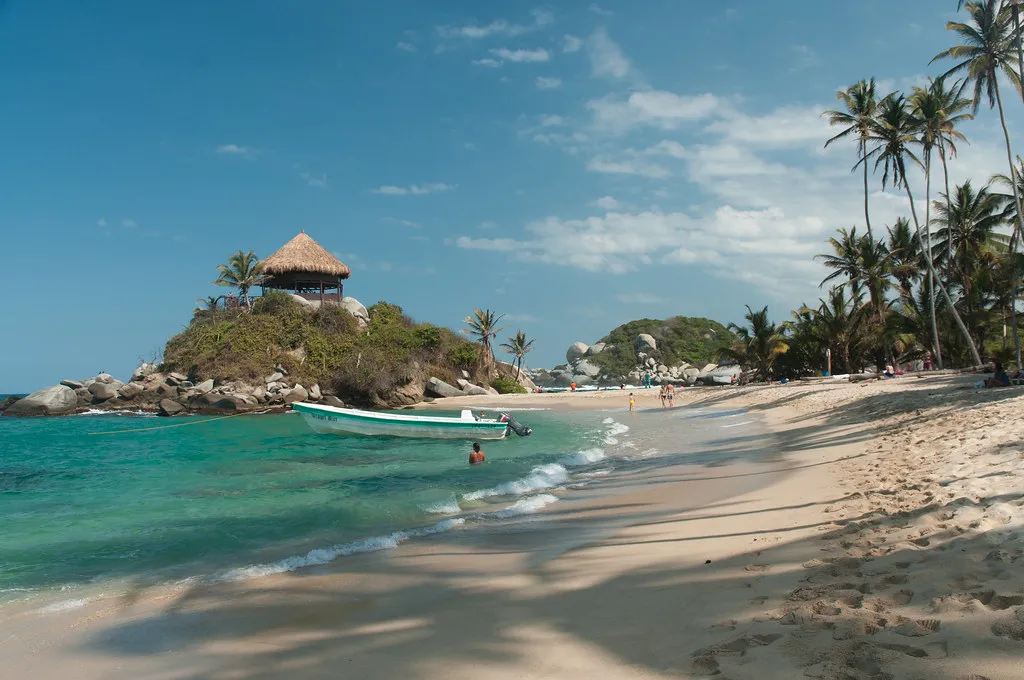
Tayrona National Park feels like a small slice of paradise tucked away on Colombia’s Caribbean coast. This protected area combines dense rainforest with secluded beaches, where palm trees lean over white sand and crystal-clear waters. Getting here takes some effort – you’ll need to hike for about an hour through the jungle to reach the best beaches – but that’s exactly what keeps the crowds away. The park’s mix of ancient indigenous ruins, hidden coves, and rich wildlife (including howler monkeys swinging through the canopy) makes it feel like you’ve stepped into another world. Just remember to book ahead during peak season, as the park limits daily visitors to protect its natural beauty.
San Andrés Island, Colombia

San Andrés Island feels like a slice of Caribbean paradise that somehow ended up belonging to Colombia, despite sitting closer to Nicaragua’s coast. This small coral island, surrounded by a sea that shifts between seven distinct shades of blue, has become a favorite among travelers seeking that perfect beach escape without the tourist crowds of more popular Caribbean destinations. You can spend your days snorkeling in crystal-clear waters, riding around the entire island on a golf cart in just a few hours, or sampling fresh seafood at local restaurants while watching the sunset. It’s the kind of place where you’ll find yourself slowing down to match the laid-back island rhythm, maybe even picking up some of the local Creole language along the way.
Salento, Colombia

Tucked away in Colombia’s Coffee Triangle, Salento feels like a portal to a bygone era of Colombian life. The streets are lined with colorful colonial buildings and local coffee farmers still ride through town on horseback, carrying their daily harvest. What sets this mountain town apart is the nearby Cocora Valley, home to the world’s tallest palm trees that dot the misty green hillsides. Unlike the country’s bigger cities, life moves at a slower pace here – you’ll find old men playing tejo (Colombia’s national sport) in the afternoon and families gathering in the town square to share traditional arepas. And since Salento sits right in coffee country, you can visit nearby farms to see how Colombia’s famous beans go from plant to cup.
Guatapé, Colombia
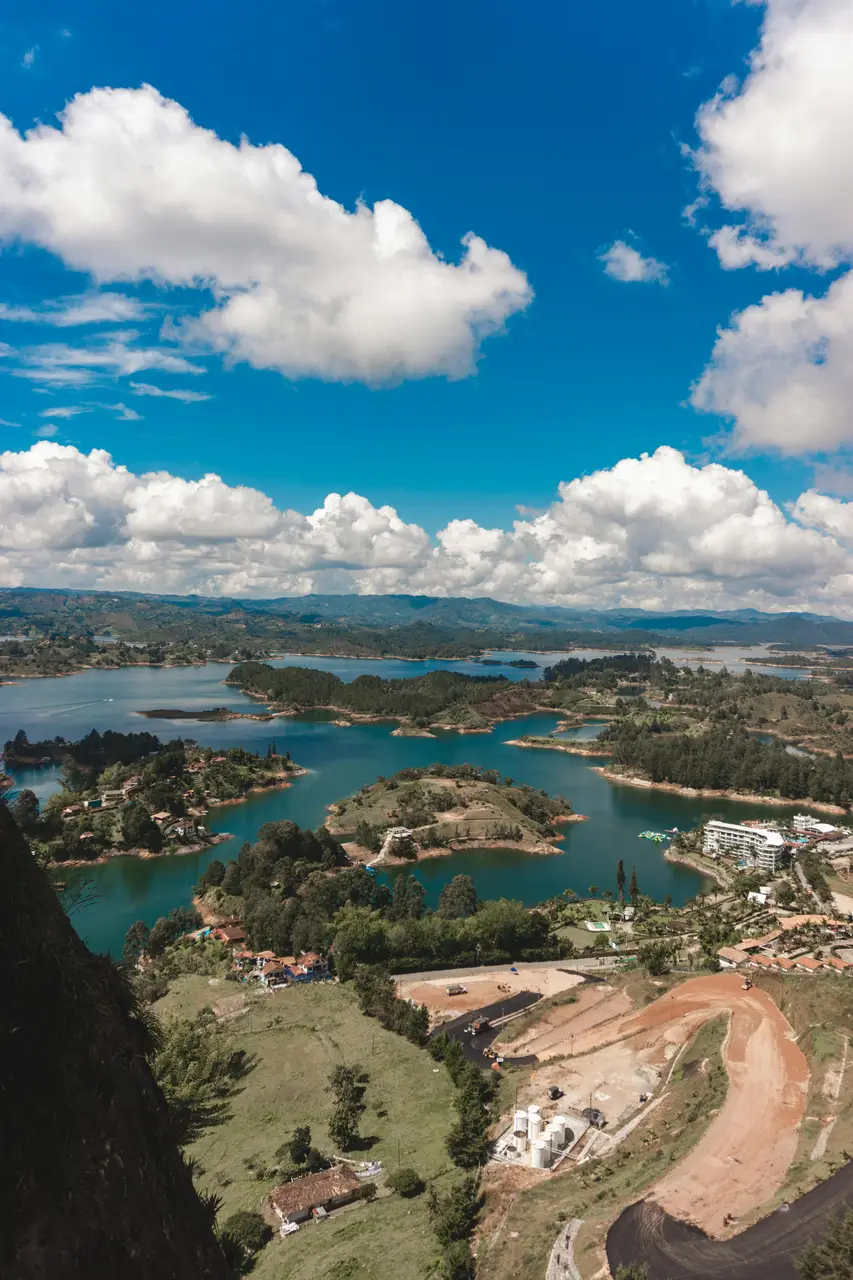
Just two hours from Medellín sits the colorful town of Guatapé, home to one of Colombia’s most photographed landmarks – El Peñol Rock. This massive granite monolith rises 656 feet above ground, and climbing its 740 steps rewards you with panoramic views of the surrounding lakes and islands. The town itself is known for its zocalos – decorative panels that adorn the lower walls of buildings – telling stories of local history, culture, and daily life through artistic designs.
Santa Marta, Colombia

Many travelers head to Santa Marta for its prime location on Colombia’s Caribbean coast, but this historic city offers much more than just beaches. As the gateway to Tayrona National Park and the Lost City trek, it serves as a perfect base for both nature lovers and adventure seekers. The Sierra Nevada mountains provide a scenic backdrop to the city, where you’ll find Colombia’s oldest colonial buildings mixed with modern restaurants and bars. While the nearby fishing village of Taganga draws snorkelers and divers, the city center comes alive at night with locals and tourists gathering in Plaza Bolivar to enjoy street food and live music.
Valle del Cocora, Colombia
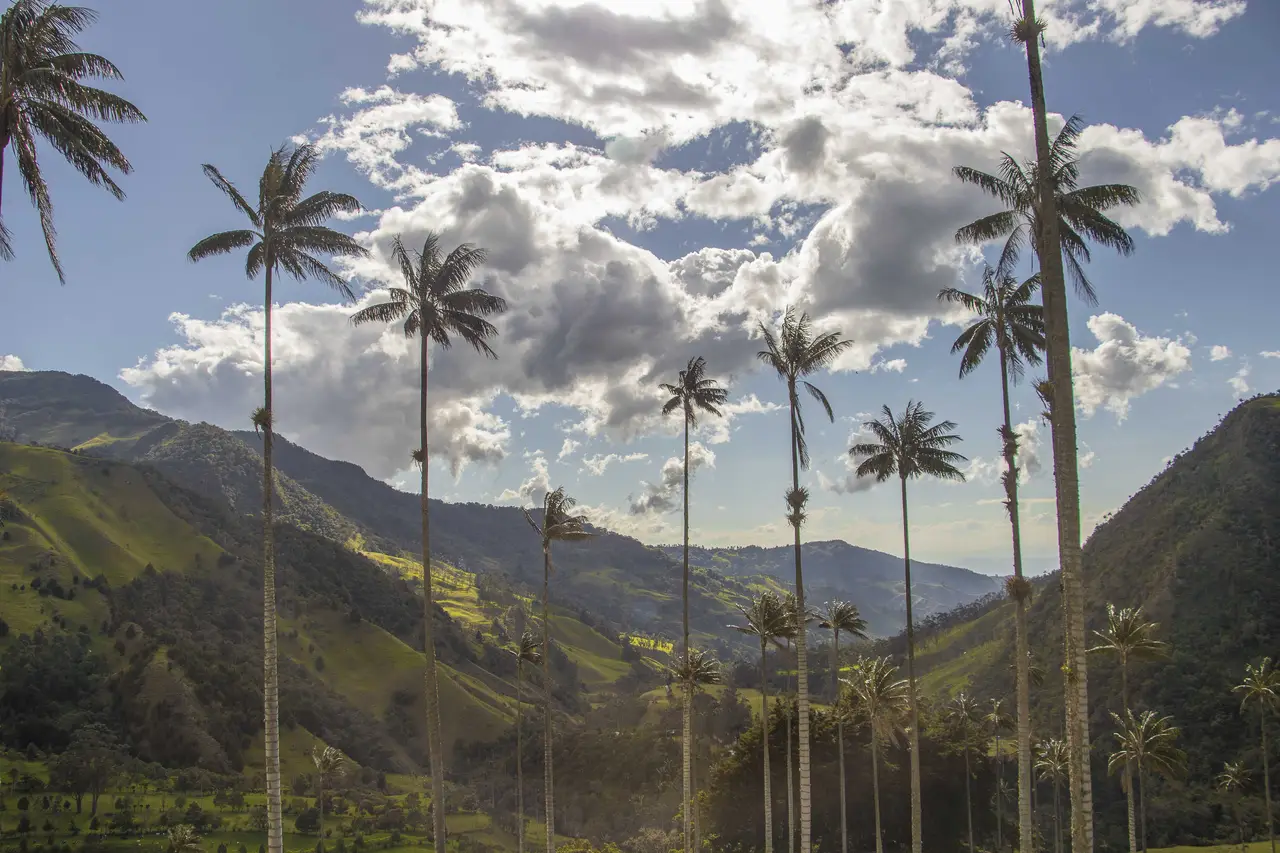
Valle del Cocora is where you’ll find Colombia’s national symbol – the towering wax palm trees that can reach heights of up to 200 feet. Located in the central Andes near the small town of Salento, this misty valley combines cloud forest trails with rolling green hills dotted by these majestic palms. It’s a place where you can hike through the mountains, cross rickety wooden bridges over streams, and spot hummingbirds while surrounded by the world’s tallest palm trees.
Lost City (Ciudad Perdida), Colombia

Deep in Colombia’s Sierra Nevada mountains lies Ciudad Perdida, known to most as the Lost City. Built by the Tayrona people around 800 CE, roughly 650 years before Machu Picchu, this ancient metropolis remained hidden beneath thick jungle growth until its discovery in 1972. A network of stone terraces and circular plazas stretch across the mountainside, connected by over 1,200 stone steps that wind through the dense forest. The trek to reach these ruins takes 4-6 days of hiking through humid rainforest, crossing rivers, and camping in basic accommodations along the way. While the journey is challenging, the reward is worth it – you’ll find yourself standing among ancient architecture that few travelers ever get to see, surrounded by mist-covered peaks and the calls of tropical birds.
San Gil, Colombia
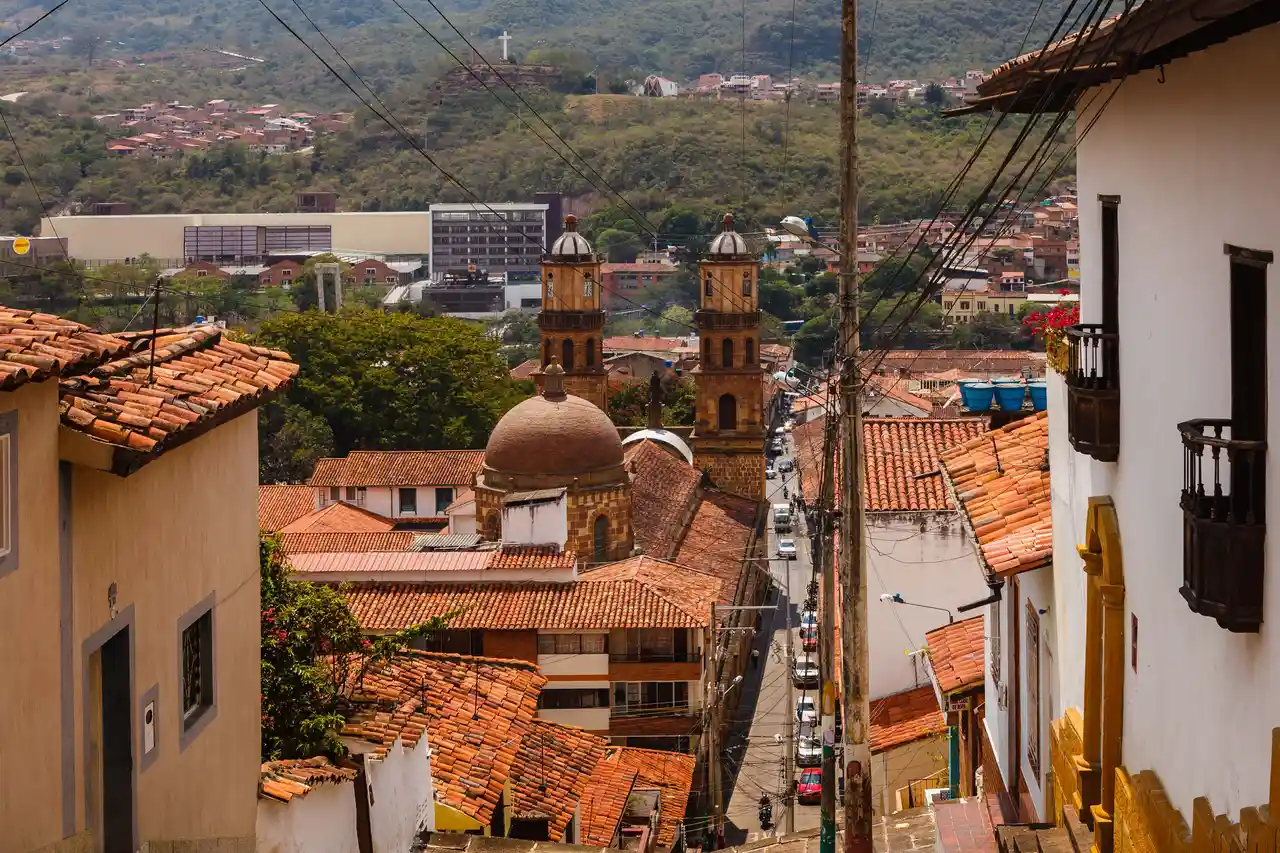
Get your adrenaline pumping in San Gil, Colombia’s adventure sports capital. This lively town offers everything from white water rafting on the Suarez River to paragliding over the Chicamocha Canyon. Head to Parque El Gallineral to take a peaceful walk through moss-covered trees, or join a caving expedition in the nearby caves. For a local experience, stop by the main plaza to watch residents gather for their evening socializing, or browse the fresh produce at the daily market. The combination of outdoor activities and small-town charm makes San Gil an ideal spot for both thrill-seekers and casual travelers.
Villa de Leyva, Colombia

Ever stepped back in time to colonial South America? That’s exactly what it feels like in Villa de Leyva, a charming town just a few hours north of Bogotá where cobblestone streets lead to one of the largest plazas in the Americas. Built in the 16th century, this perfectly preserved town sits in a valley surrounded by rolling hills and ancient fossil beds – you might even spot some dinosaur footprints! The local markets overflow with handwoven ruanas (traditional ponchos), while small cafes serve up fresh arepas and locally grown coffee. Just outside town, you can explore hidden waterfalls, visit organic lavender farms, or go horseback riding through the countryside like the Spanish conquistadors once did.
Did You Know This Fact?
Villa de Leyva looks like it’s frozen in time, with its cobblestone streets and white colonial buildings that have barely changed since the 16th century when the Spanish first built this mountain town. What makes it even cooler is that this small Colombian town sits on what used to be an ancient seabed, so you can find tons of fossils scattered around – including some of the best-preserved dinosaur remains in South America.
Providencia Island, Colombia

If you’re looking for a true Caribbean paradise away from the crowds, Providencia Island is your answer. Located 50 miles north of San Andrés, this small Colombian island offers crystal-clear waters perfect for snorkeling and diving around the world’s third-largest barrier reef. The island’s laid-back atmosphere, pristine beaches, and authentic Caribbean culture make it feel worlds away from mainland Colombia.
Parque Nacional Natural Los Nevados, Colombia

Looking for a place where glaciers meet tropical forests? That’s exactly what you’ll find at Parque Nacional Natural Los Nevados, where snow-capped volcanoes tower over misty páramo landscapes. This natural wonder in Colombia’s coffee region lets you trek through various ecosystems in a single day – from icy peaks to cloud forests filled with unique frailejones plants. The park’s crown jewel, Nevado del Ruiz volcano, reaches an impressive 17,457 feet, making it a paradise for mountaineers and nature lovers. You can spot Andean condors soaring overhead while hiking through the highland trails, or warm up with a dip in the natural hot springs near the volcano’s base.
Mompox, Colombia

Tucked away along the Magdalena River in northern Colombia lies the sleepy colonial town of Mompox. Much like other historic Colombian towns, Mompox features colonial architecture, churches, and riverside views. But unlike the others, it exists in a peaceful bubble where the modern world seems to have barely touched its cobblestone streets. Just wander past the craftsmen working with filigree silver in their open-door workshops, a tradition passed down through generations, and you’ll see what I mean. Because of its strategic location during colonial times, Mompox was once a wealthy trading port, and you’ll find grand colonial mansions, elaborate baroque churches, and intricate metalwork that hint at its prosperous past.
Jardín, Colombia
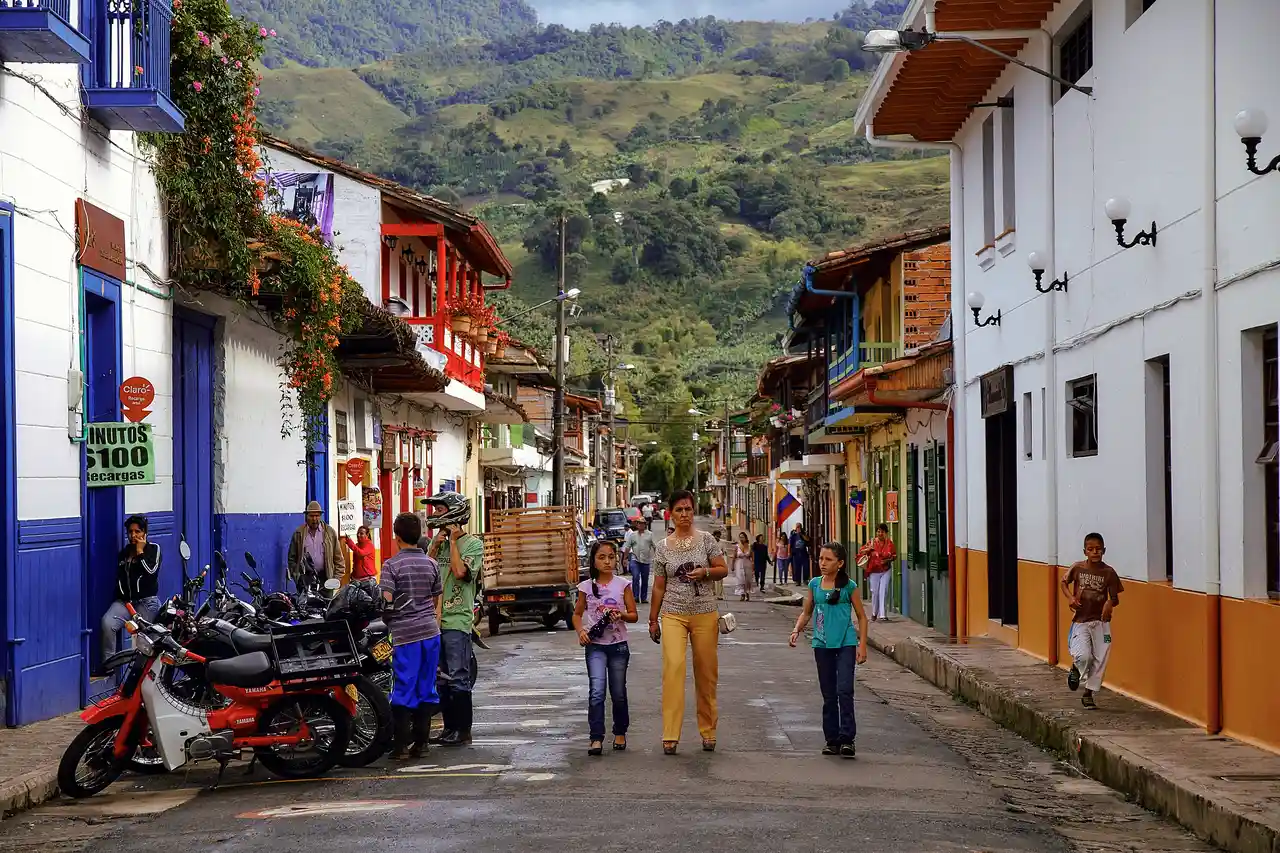
Tucked away in the mountains of Antioquia, about four hours south of Medellín, sits the charming town of Jardín. Like many Colombian pueblos, Jardín features colorful colonial buildings and a bustling town square where locals gather to chat over coffee. But what sets this place apart is its authentic small-town atmosphere that hasn’t changed much in decades. Just watch the local farmers ride through town on horseback wearing traditional ponchos and wide-brimmed hats, and you’ll see what I mean. Thanks to its location in Colombia’s coffee region, Jardín has become a hub for coffee production, and you’ll find family-run coffee farms and traditional cafes dotting the surrounding hillsides.
Cali, Colombia
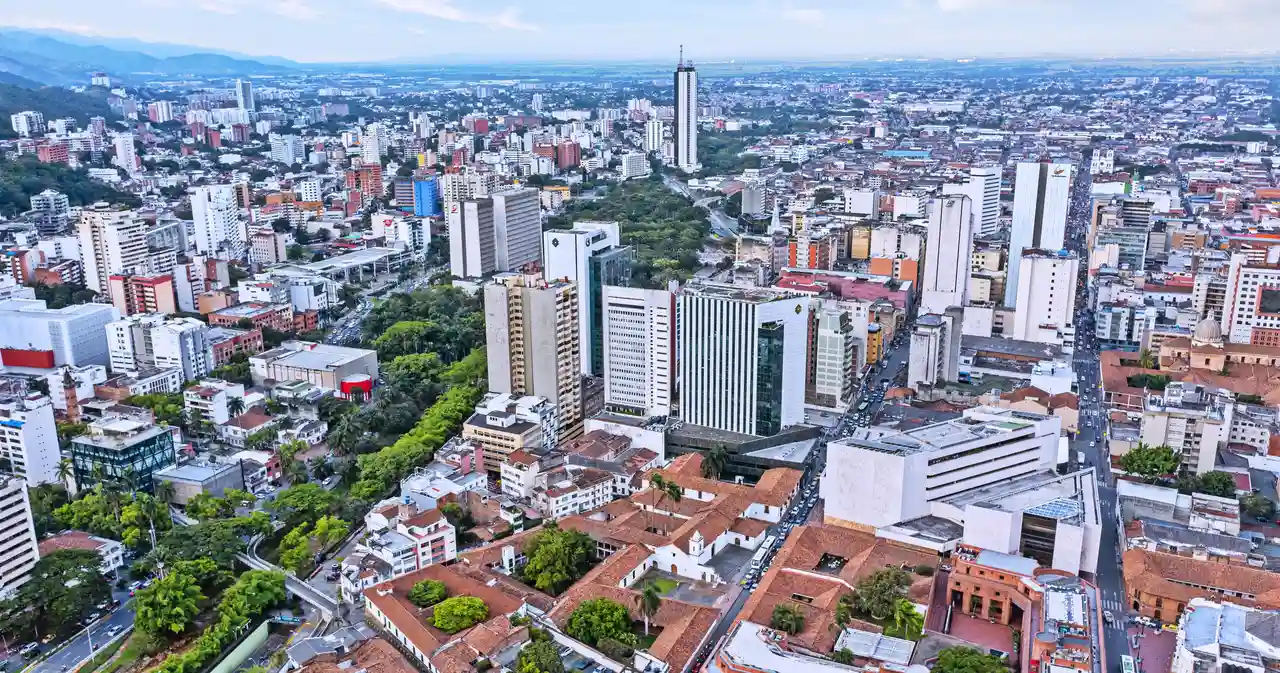
Exploring the salsa capital of Colombia, Cali pulses with a rhythm that’s hard to resist. Located in the Valle del Cauca region, this city’s heart beats to the sound of Latin music pouring from its many dance clubs and social halls. The San Antonio neighborhood stands as the cultural center, where cobblestone streets wind past colorful colonial houses and local cafes serve up traditional Colombian coffee. By day, visitors flock to the Cristo Rey statue, which watches over the city much like Rio’s Christ the Redeemer, while the evening transforms Cali into a dancing playground. The Barrio Peñón area hosts some of the best salsa schools, where even beginners can learn to move their hips to the distinctive Cali style – faster and more energetic than its Cuban cousin.
Leticia, Colombia
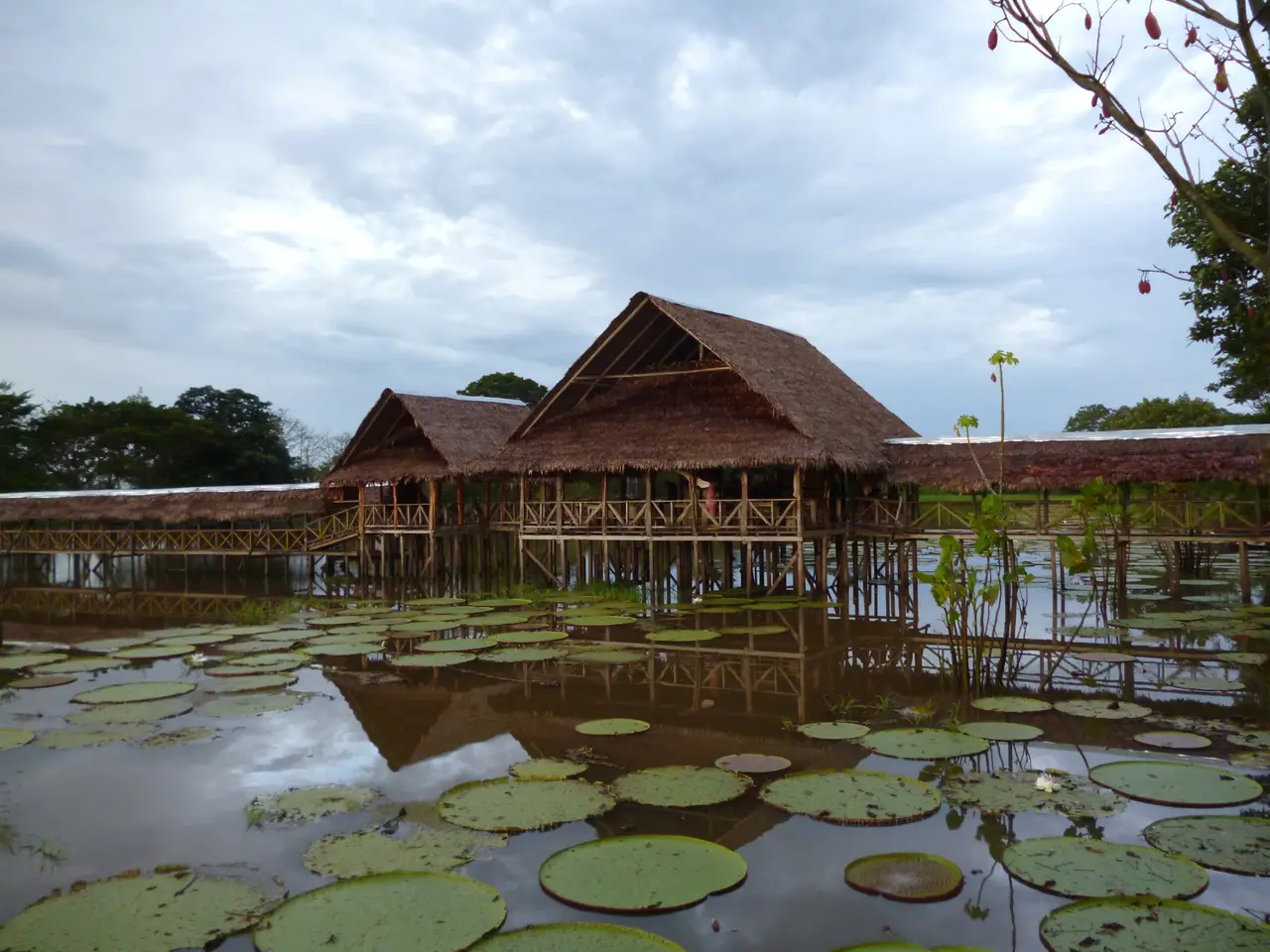
Tucked away in the southernmost corner of Colombia lies Leticia, a city that feels more like a gateway to the Amazon than a typical Colombian destination. Unlike the country’s bustling metropolises, Leticia moves to the rhythm of the mighty Amazon River, which serves as a natural border between Colombia, Brazil, and Peru. As you walk through its streets, you’ll hear a mix of Spanish, Portuguese, and indigenous languages – a testament to its unique position where three countries meet. The city’s role as an important trading port has shaped its identity, with local markets full of Amazonian fruits you won’t find anywhere else in Colombia, and indigenous craftspeople selling their traditional artwork. Listen for the calls of toucans and macaws flying overhead, and you’ll understand why this isolated outpost has become a launching point for adventures into the world’s largest rainforest.
Rosario Islands, Colombia
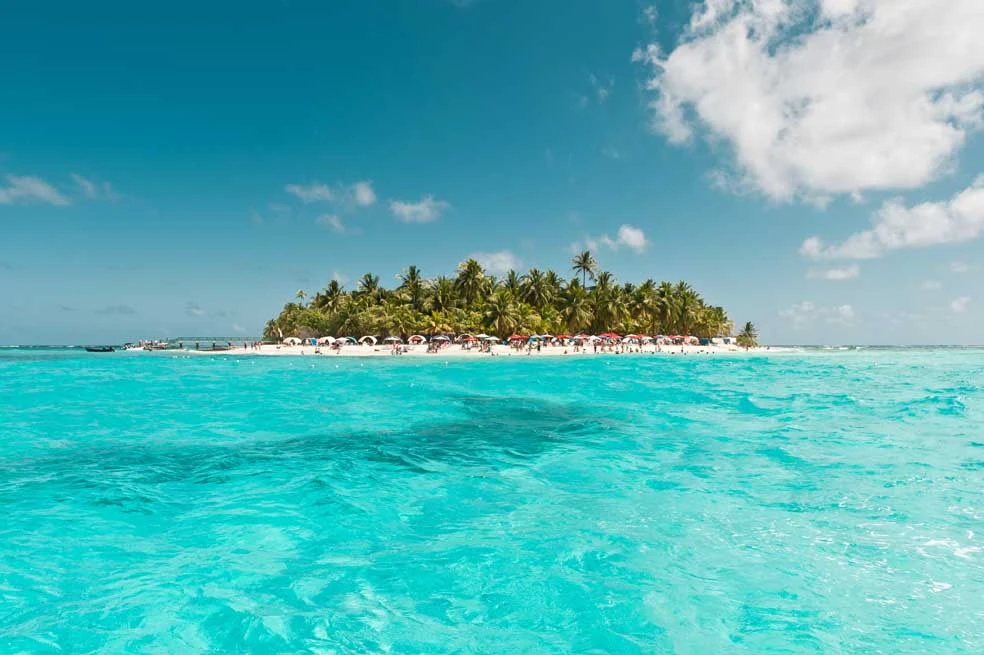
Ever dreamed of swimming in crystal-clear Caribbean waters surrounded by colorful fish? You’ll find exactly that in the Rosario Islands, a group of 27 coral islands just an hour’s boat ride from Cartagena. A protected national park since 1977, these peaceful islands offer ideal conditions for snorkeling and diving among coral reefs teeming with tropical fish, sea turtles, and dolphins. You can stay in one of the small hotels dotting the islands, spend your days hopping between secluded beaches, and end each evening watching the sun dip into the Caribbean Sea while sipping fresh coconut water.
Caño Cristales, Colombia

Have you ever seen a river change colors like a rainbow? That’s exactly what happens at Caño Cristales, a magical river system tucked away in Colombia’s Serranía de la Macarena National Park. During the wet season between July and November, this unique waterway bursts into shades of red, yellow, green, and blue thanks to an aquatic plant that grows on its rocky bottom. Known as the “River of Five Colors,” it’s one of those rare places where you can witness nature putting on a show that seems almost too extraordinary to be real. You can hike along the river’s edge, take guided tours through the surrounding wilderness, and maybe even spot some of the native wildlife that calls this colorful paradise home.
Zipaquirá Salt Cathedral, Colombia
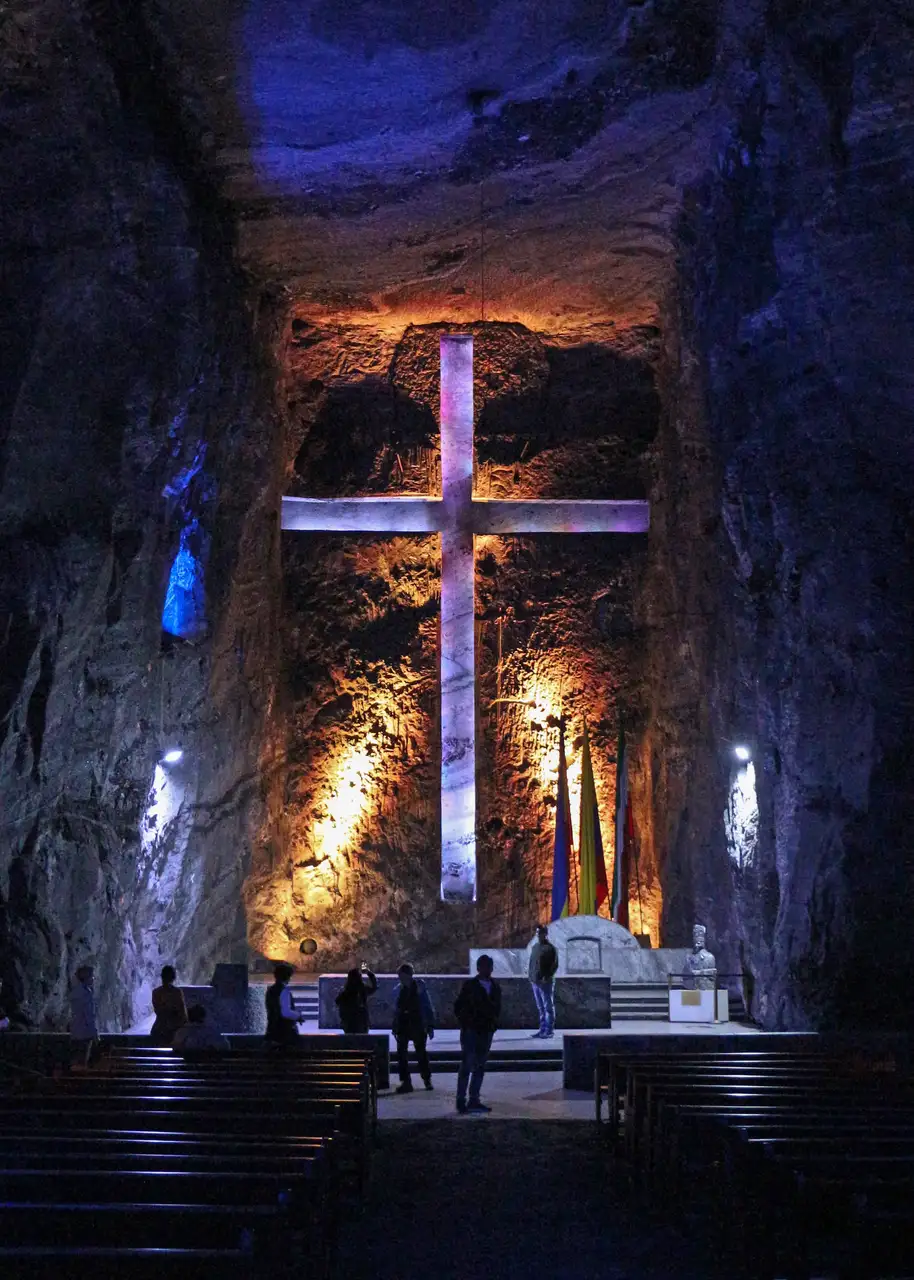
Just an hour north of Bogota lies Zipaquirá, home to one of Colombia’s most unique attractions – a cathedral carved entirely from salt. Located 180 meters underground in an old salt mine, this architectural marvel tells the story of the region’s rich mining history. Unlike traditional churches, every wall, pillar, and altar here is made from pure rock salt, illuminated by changing colored lights that create an otherworldly atmosphere. As you descend through the tunnels, you’ll pass 14 small chapels representing the Stations of the Cross, each one carved by local miners who transformed their workplace into a place of worship. The cathedral can hold over 8,000 people, and on Sundays, locals still gather here for mass, just as their ancestors did generations ago.

